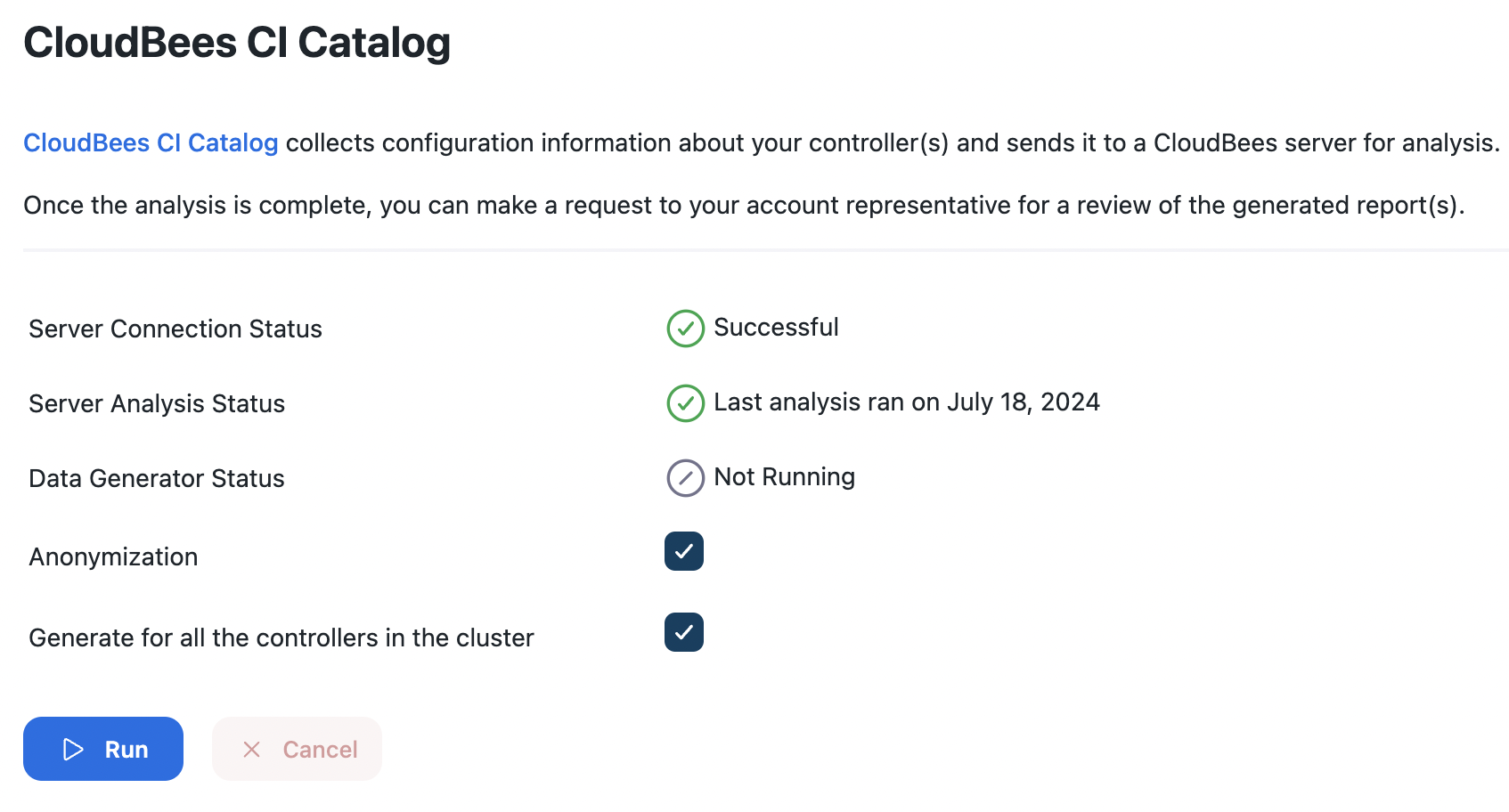The CloudBees CI Catalog plugin simplifies data collection and analysis to better manage CI environments. It provides the following:
-
Collect and Analyze Configuration Data: The plugin collects configuration information about your controller and sends it to a CloudBees server. This generates a comprehensive report for review with CloudBees Support or Professional Services. This process provides valuable insights into the components that run in the CI environment.
CloudBees CI Catalog Tool
The CloudBees Catalog tool collects configuration information about your controller and sends it to a CloudBees server.
To find the plugin, use the following steps:
-
Select in the upper-right corner to navigate to the Manage Jenkins page.
-
Select CloudBees CI Catalog.
The CloudBees CI Catalog tool analyzes all the items on your controller, and it is run and produced on the server side. The tool displays the following information:
-
Server Connection Status: Displays the status of the server - is it reachable and responding?
-
Server Analysis Status: The time that the last analysis was run.
-
Data Generator Status: Status of the data collection process.
-
Anonymization: Anonymizes any customer-sensitive information in the report.
-
Generate for all the controllers in the cluster: Select this option if you want to generate a report of all of the controllers in the cluster.
-
To use the CloudBees CI Catalog tool, select the Run button to collect configuration information about your controller and send it to a CloudBees server where it is analyzed by AI and generates a report.
|
You must contact your CloudBees account representative and provide your instance ID to access the report. |
The following example displays the CloudBees Catalog tool.

If you leverage the CloudBees CI Catalog plugin, you can achieve greater clarity and control over your CI environments. This enables efficient management and smooth migrations.